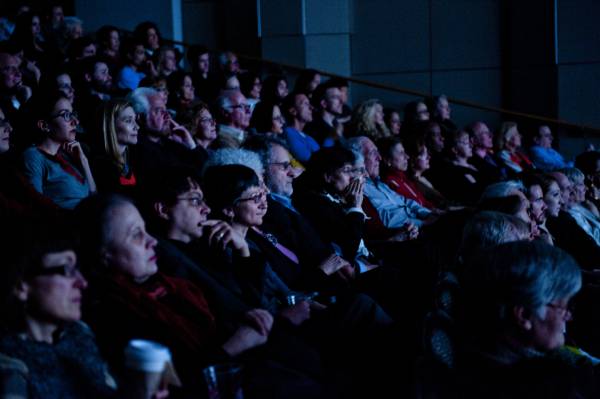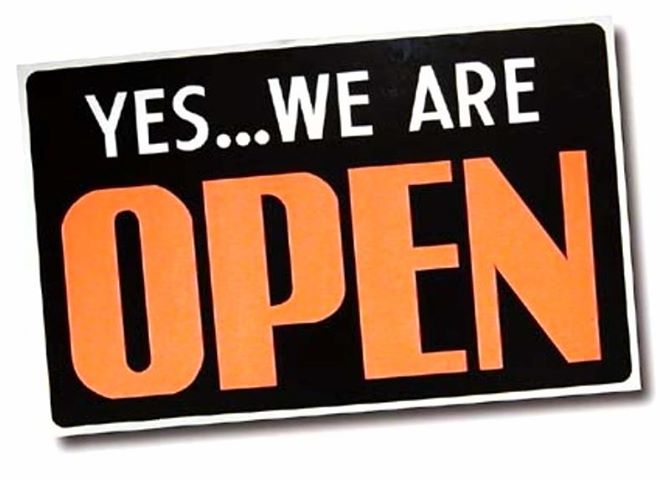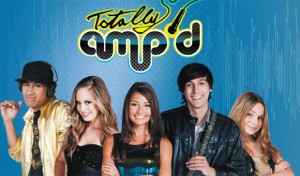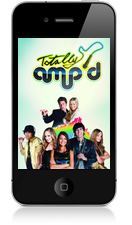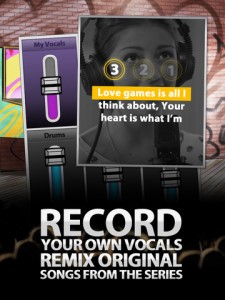
Crowdfunding: Asking the Hard Questions
Today’s guest post is from Seed&Spark’s CMO, Erica Anderson. Seed and Spark is selective crowdfunding platform. Before Seed&Spark will approve a project for the platform, all components for a successful campaign need to be assembled: a strong team; the seed of a great film; and a compelling purpose behind your proposed film.
One of the hardest things to remember when you’re thinking about taking a film from idea to execution is that raising money is not, in fact, the hardest part of filmmaking, though it may be the most uncomfortable. The most difficult task is getting anyone to see it when it’s finished. It’s not only difficult, it can be really expensive. Studios spend 1-10x production budgets on marketing. Indie filmmakers don’t stand a chance in that environment (although, marketing should ALWAYS factor into your budgets). Enter crowdfunding: a way to raise money while marketing your film.
In this light, Seed&Spark would like filmmakers to start viewing crowdfunding not as a necessary evil (or a mark of a film that simply can’t get financing otherwise), but as a key tool to engage their audiences in the filmmaking process and to grow a devoted fan base. The fact that you also get to raise a chunk of change is important, but it’s the short game. (A devoted fan base will make raising equity So. Much. Easier.) The long game is your career and making sure there are people who want to pay to watch your films for as long as you can make them. That means building in to your preproduction an audience-engagement campaign. Every film is different, and there are as many ways to engage your audience as there are filmmakers. That said, we have identified some guidelines and critical questions every filmmaker should consider if they want to crowdfund (With us, and with anyone else.).
Crowdfunding is not an exact science or a paint by numbers affair, but the wheel does not need to be invented with every campaign. Lists are really helpful. Below is a list of criteria that we look for in project submissions that would like to crowdfund with Seed&Spark. These “guidelines” are largely based on the potential for a filmmaker and project to foster a supportive and engaged audience. We work with all our filmmakers to make sure they’re maximally set up for success – a tactic that has led to a 70% crowdfunding success rate (compared to less than 40% on other platforms).
Pitch video:Your pitch video should either make us fall in love with you or give us a great sense of what the finished film will be like. The best pitch videos will do both. Because this is a campaign for a film, the video has to be great and should exemplify your filmmaking abilities and techniques. Remember, people will invest in you andyour storytelling talent, rather than in a “concept.” You have to demonstrate you’re a good editor: people stop watching pitch videos at 90 seconds.
Story: The story of your project is why YOU need to make THIS film NOW. Film and filmmakers are naturally suited to building their audience using Who are YOU? What is THIS project? And WHY does it need to be made? Give me an arc! Give me Drama! Make me care as much as you do! We ask you to tell us about this project. It should be personal. What are you offering to the community such that they should want to get involved with you?
Audience: The easiest way to start telling this story is to think: who is the actual audience for this film? Where do they hang out online? (So I know where to share the campaign?) What speaks to them? If you’re saying to yourself “Well, it’s men between the ages of 18-25,” you’re doing it wrong. Do you have a sense of who your audience really is? What kinds of music, events, things do they like? This is important not just for your pitch video, but also building your wishlist and incentives. They need to be personal and interesting to your crowd.
Team: The scope and budget of the film can be aspirational, but should match your experience, abilities, and stage in the process. If you’re raising $500,000 for a big period drama, you and your team should reflect that capacity. (Also, don’t run a crowdfunding campaign by yourself. Just don’t do that to yourself.)
Outreach: Take a look at your current social media and personal reach. If 6% of those people give $20 bucks, do you reach your goal? No? Then you have to formulate a plan to reach beyond that circle. Regardless of where you are in the filmmaking process, are you already engaging with your potential audience? Examine what gets people excited when you post. Do more of that. Do you have a social media presence on as many outlets as possible? Have you organized your contact lists on email, Facebook, Twitter, YouTube, Pinterest, Instagram, Tumblr, Reddit etc? Or do you know your audience spends most of their time on just one of these platforms? Focus your efforts on what works, and don’t waste time on what doesn’t. That means you’ll have to run some tests along the way.
A plan for success: Have you thought through how to successfully complete your project and get it to an audience? Your distribution plan could range from “We’re planning to apply to top festivals and get picked up by Magnolia Pictures” to “We’re going to pursue direct-to-audience distribution as soon as the project is complete.” Frankly, since option #1 happens for 0.01% of films, you should probably have a really comprehensive, thoughtful backup distribution plan that involves just as much work as the crowdfunding campaign. Don’t assume you can jump right in to your next project after this one premieres at festivals. 99.9% of the time, you are also responsible for getting that film to market. That is also a plan for success.
Time: Do you have time to run a campaign? Contrary to popular belief, if you just build it, they will NOT come, no matter what platform you use to crowdfund. You will have to capture your audience and then keep engaging them – long after the campaign and film are finished. A crowdfunding campaign should be thought of as time added on to pre- or post- production, not as something that can be run in tandem. In order to maximize the utility of crowdfunding, you’ll want to build in time once or twice a week for your entire career to engage with the folks who have chosen to support you.
While this list is not exhaustive (though possibly exhausting for some), it’s a very good start. These are questions I pose to every filmmaker who is interested in our platform. Submitting a campaign is a process and we don’t expect all of these criteria to be met before accepting a project. However, we find these criteria and questions essential not just to successful campaigns, but successful filmmaking. As our inspiring CEO and my dear friend Emily Best said so eloquently, “Great crowdfunding is the efficient frontier between belief in your idea and the desperation to get it made. If you’re willing to put in the work to make a campaign successful, you’re on your way to a lifetime of truly independent moviemaking.”
Sheri Candler November 25th, 2013
Posted In: crowdfunding
Tags: audience building, crowdfunding, Emily Best, Erica Anderson, fundraising, guidelines, independent film, Seed&Spark, Sheri Candler, The Film Collaborative
Transmedia case study-Totally Amp’d
By Sheri Candler
To coincide with 2 large events of interest to the cross platform storyteller, London’s Power to the Pixel and Los Angeles’ Storyworld Conference, I wrote up this case study of a cross platform project that was featured on the Storycode site. For the visual learners, there is a video of the presentation at the bottom of post, but it does run over an hour and a half.
Cross platform case study from Canada
Jay Bennett, VP of Digital/Creative Director, Smokebomb Entertainment, Toronto
Project: Totally Amp’d
Totally Amp’d is a mobile-only (Apple devices) series created by Smokebomb Entertainment and the first App of its kind for the underserved tween (ages 8-14) mobile entertainment market. Telling the story of five talented teenagers who are brought together to become the next big pop group, Totally Amp’d comprises a 10-appisode live-action musical comedy series, an original soundtrack, and a suite of interactive activities designed to fully immerse kids in the action.
Intent:
To make an episodic show inside of an app which would incorporate all sorts of interactive elements including music creation, movie editing and fashion design. Also, to experiment with the idea “We are the broadcaster” and see if it is possible to bypass traditional television gatekeepers and connect directly to the audience.
Funding:
Production funding came via the Canadian Media Fund Experimental Stream which supports the creation of innovative, interactive digital media content and software developed for commercial potential by the Canadian media industry or for public use by Canadians. Grant award was less than one million dollars (CAD) of which the video production budget was by far the majority of the budget, around $500K. The app technical development fell between $50-$100K. With an inhouse team this could have been lower, but they used a third party developer.
Audience demographic:
They intended the series to target 8-12 year old girls and focus on music and performance, capturing the American Idol/Glee set. Aim was to create the show for an older girl, a 14 year old, because then the 8-12 year olds will watch.
Background of the team:
Bennett came up through the ranks of digital advertising agencies conceiving and executing ARGs, puzzles and finding code in URLs to tell stories. He disagrees with that approach to storytelling because he sees himself as the average user, not someone used to looking for the magic rabbit hole in a story. He wanted the story to be more accessible through video because it is a medium the average user understands. While he believes that there are opportunities for deeper content, he would rather spend the majority of the budget on video content and much less on puzzles, games, ARG type experiences.
Smokebomb Entertainment is the digital division of Shaftesbury Productions, a leading Canadian TV producer. Totally Amp’d is their first completely original project to launch.
They brought in Karen McClellan as head writer with experience in the children’s TV market as well as writers from from the young adult market to give the scripts a more mature feel. The cast they chose played within a year of their real ages, not having 22 year olds play 17, in order to have more authenticity.
Development phase:
During research, they found a lack of good content apps aimed at the female tween demographic.
Though they started out thinking conventionally ( a webseries with some interactivity as an app), the research showed that most people now have smartphones and tablets or would have them very soon so they decided to take the whole project into the app space and viewable on a mobile device.
They only developed the project for Apple products (iPod touch, iPad, iPhone) because they felt that when people think app, they think Apple iTunes. There was a revenue incentive as well since people expect online content to be free of charge, but they don’t expect all apps to be free and they are used to paying via their iTunes account for music and other downloads. This would alleviate the need to access another way (like via credit card or Paypal) for people to pay.Since music was the major focus of the project, they brought in a professional composer who could create pop music worthy of its own release. Kids would know if they were being given “adult” music masking as teen pop and they wanted the music to be a revenue generator so it had to be top notch.
Also, they brought in a production designer to give the set a look that would be remarkable on a small screen. The result looked half real life, half cartoon, a bit like rotoscope. Elements of the set were painted on real glass plates that cost about
$2400 a piece to create, though much of the time they ended up using green screen and VFX which was even more expensive.
Thinking through each component of the app:
This an episodic show about the musical arts so possible elements to include would be music, music videos, fashion, community where kids could discuss the content together, an avatar to use in the community, game to build up points within the community, unique production design that would make the project stand out and sharability on social platforms.
But legal concerns got in the way of building a community forum because legally they needed a moderation team, especially for kids. Big broadcasters have this, but if you don’t have that support (YOU are the broadcaster, remember?), do you have the resources to do it? Also, the avatar idea was dropped because of the cost of building an avatar generating system, the game idea was dropped due to budget concerns and as was social sharing because of deadline issues and the ability of the app to handle pushing out that size of a file to a Facebook or Twitter page. Dropping social sharing was probably a mistake when it came to promotion.
Typical shoot for the video episodes:
6 days, 16 cast members, 72 shooting pages, 58 minutes of content, 10 episodes with an average of 5 minutes per episode, 2 RED cameras, 7 music videos.
The App
They intentionally tried to keep the app simple to use due to budget constraints and due to the age of the audience who could be as young as 5 years old. They needed something very intuitive. The app encompassed both the episodes and the activities. At the end of each episode, a new piece of video content would unlock.
There is a music studio with all the songs from the episode. One could remix the songs with a choice of different instruments, save the creations and play them back, record your own voice singing the songs so you could be the star.
There is a video studio for the music videos. There are 3 screens showing different camera angles of a video and the viewer can edit them however they want. Editing was just a series of touching the screen and the app would remember the sequence and play it back.
Finally, the design studio for the fashions. Viewer is given the blank outline of the outfit and given a choice of material patterns, colors, decorations then dress the characters from the show, a la digital paper dolls, and put them in a scene background from the show. The creations can be saved and turned into wallpapers, screen savers etc.
Deployment strategy
With file sizes like this, wifi connection is a necessity. Although putting the whole app out at once would be a huge download issue, the team thought making kids wait episode by episode would tax their patience. The file size was one gigbyte, about a 20-30 minute wait for download on iTunes.
They put out the first episode for free on Youtube, but to get the whole package, the viewer had to pay one price and it opened the whole app with all of the episodes and special content.
Deciding on a price point
Free was out of the question and 99 cents still felt like free. It would be difficult to raise the price if it started at 99 cents. For an hour’s worth of content plus the extra material, the price they settled on was $4.99. That is the median price to rent a movie on iTunes and so it would be a comfortable price point for most consumers.
Building the Audience
There was a 2 prong strategy; getting attention from the industry/technology audience and from kids/parents of kids who would actually use the app. Parents often browse the app store looking for interesting content for their kids. Since Smokebomb was the broadcaster, they had to be the promoter too.
For industry attention, they used the in house Shaftesbury Media publicity department. In the US, they used a company called One PR.
They received lots of coverage from industry press and business press.
For kids/parents attention, they enlisted the help of mommy bloggers. They did a press junket for a group of 8 influential mommy bloggers to come to Toronto to watch a shoot, see the making of the videos etc. This cost about $15000, but in hindsight they would have bought Facebook ads instead. Not that the goodwill hurt, but to spend that money to get these people to write reviews, it is likely they would have written about it for free just like any other journalist.
For social media interaction they worked with Fisheye Corporation. Tools they utilized included Facebook, Twitter, Tumblr, Youtube, own website with videos and contests.
Created 73 video assets of behind the scenes of production in order to get viewers to know the characters more intimately with backstories and explanations on using the app and what the show would be like. This was slowly dripped out in the lead up to launch.
The team released iPhone recorded videos of music recording sessions, dance rehearsals, cast doing demos of the app to show how it worked. Prize giveaways consisted of asking viewers to record themselves singing one of the songs and uploading it to the Facebook page for a chance to win. They Livestreamed the launch party on Facebook so the audience could join in and people could ask questions with the cast standing in front of the camera to answer. A street team was deployed at local pop concerts happening in Toronto with flyers promoting the show. This was all done in the lead up to launch day in order to build up audience anticipation.
Partnered with Wattpad, a young adult fiction site where amateur writers upload their stories without pay, but some writers have millions and millions of followers. They worked with 5 of the most popular writers and gave each a character from the story and had them write a backstory that did not previously exist. All the backstories led up to the first episode the viewer would see.
They promoted it on Wattpad with character videos explaining what the app was, encouraging viewers to read the backstory on Wattpad, and promoting the launch date and Facebook page.
Deployment implementation
Episode one was released for free on Youtube on Christmas Day. They released lots of teaser clips in the lead up to the first episode release. The clips were featured on AOL Kids which helped the episode reach 320K views. Official launch was January 26, 2012.
There is a risk with doing this. If the audience doesn’t like the first episode, you’ve lost them forever.
Successes
-the project actually launched, and on time
-strong press and critical praise
-industry praise from broadcasters at MIPCOM who said they beat Disney and Nickelodeon to the punch
-Disney wanted to buy the app, but Smokebomb said no because when that offer came, the project hadn’t launched yet and they wanted to see it through. Also, they would have to get agreement from each department head involved at Disney (broadcast, interactive, music etc) and that is very arduous and would take another year to sort out. Also, Disney would own it, there is no revenue share with them. In other words, you get one check and any revenue success Disney has on it (or lack thereof) belongs to Disney.
-launched to great success with fans asking for more! This was a mixed blessing because there wasn’t anything else being created in the immediate future.
Lessons learned
–Danger of the all at once release strategy
After 3 hours, the viewers had burned through all the content and wanted more. The danger in allowing binge viewing is all the build up dissipates in a short amount of time. If they had dripped out the episodes, which they hadn’t wanted to do because they felt the audience wouldn’t be patient, then they could have done more to stoke up the conversations in between episode releases and that would have taken 10 weeks to do, instead of 3 hours. As it was, the audience ate up all the episodes and then were gone to the next thing.
–Danger of the file size
Since the app was 1 gig and had a 30 minute download time, some may have given up before the download finished.
–Being the megaphone
In doing this without a broadcaster’s support, it is exceedingly difficult to reach millions and millions of people on your own, only a fraction of whom will actually buy and download. Undeniably, once the initial launch efforts were finished, the download count dropped. People are still downloading, but nowhere near what they were at the start. This is all down to having a strong and sustained publicity effort going. Once the promotional budget was spent and efforts ceased, the buying went down.
–Selling the rights in other territories
[editor’s note: I know many creators count on the revenue stream they are sure to get from broadcasters/distributors] No broadcaster cares about buying the rights to 10 episodes of a webseries. They will only get 10 weeks out of it on TV and then the show is finished. They don’t want to work at building an audience for only 10 episodes, they want 100 episodes. Same for selling broadcast TV syndication, you can’t sell a show with less than 3 seasons.
Axing the social sharing capability
By axing the social sharing due to budget, they also disabled the ability for free messaging by the viewers to spread their efforts wider. The purpose of social networking is sharing content you are excited about and they didn’t enable an easy way to do that. People did find a way around it, but it could have been done more easily.
Next steps based on those lessons
-Perhaps strip out the episodes and put them online for free to build the widest audience possible. Once you have that large audience, find opportunities to sell either advertising or to a broadcaster who will commission more episodes. [editors note: while this theoretically could work, many, many Youtube channels are already devoted to doing this and very few have accomplished it].
-Perhaps keep the interactivity portions to sell as an app, making the app shorter to download and cheaper, like 99 cents. With many more people watching, it is a much bigger pool of people to ask to buy a 99 cent download app.
-Extend the experience without making new content, new shows, because the production fund is spent so there is no money to make anything new. Perhaps they could build a website as a portal to discovery of other content already available online. Examples: existing unknown bands with the same music sensibility as the show and highlighting them; calls for UGC content as well.
-Look at this project as a pilot for TV or web series for a broadcaster. Truthfully, broadcasting is still where the audience is in a mass way. Are there viral hits on Youtube, yes a few, but the mass audience isn’t consistently on Youtube yet. The ultimate goal is TV, mobile, games, live event, the whole package.
Questions to consider
-How do you create an app that massively catches on when tons of people are creating new things and uploading them every day?
-Once your app is found, how do you keep people engaged from week to week? What mechanisms are you creating to keep your project top of mind?
Thanks to Jay Bennett for being candid about Smokebomb’s process and outcomes. For the video of his presentation including the post Q&A session, watch this
Sheri Candler October 16th, 2012
Posted In: transmedia
Tags: American Idol, app, Apple, ARG, audience building, Canadian Media Fund, Glee, iPad app, Jay Bennett, Power to the Pixel, Shaftesbury Productions, Storycode, Storyworld Conference, Totally Amp'd
Top 5 Ways to Fail at Crowdfunding
This post originally ran on Sheri Candler Marketing and Publicity’s blog
I am prompted to write this post because I have been hit up many times lately about supporting, advising or donating to various crowdfunding initiatives. Don’t get me wrong, it isn’t quite a complaint because I have been known to support many campaigns by doing any one of these things (ask anyone else offering their advice if they have done any of these things by the way, the answer could surprise you). I do get frustrated by the ones who contact me because they have embarked without thinking through the strategy or they are very close to the time limit and very far from their goal. I thought it might be helpful to list out some ways to fail in this endeavor so you can be sure to avoid these mistakes.
1) You do not already a have a support network online. This is a biggie. I know you’re thinking Sheri, how can I already have an audience and supporters of my work when I haven’t raised the money yet to do my work? Do you have a personal identity built up? Does anyone actually know who you are yet? There are many ways to do this, starting with sharing your knowledge and experiences with people and championing others as much or more than you do yourself. This identity building takes time and should be started well in advance of asking for favors. If you don’t have a strong support network of friends, colleagues and people who enjoy the work you do, do not introduce yourself and your project by asking for money.
2) Your goal is unrealistic. At the moment, the highest amount I personally have seen raised is $30K. That was for a feature and mostly used on principal photography. Most of the other projects I have seen find success are raising under $10K. Crowdfunding is meant to get your project started, get your project finished or be used for something clearly defined like a festival run or your own screening tour. It is not going to be your only source of financing for your feature film. In time, as your audience grows, this could change for you. Unless you have the base of fans mentioned in #1, try raising $5k and see how you do.
3) You do not know who your audience is. In addition to that base of supporters, you will also need to reach those most interested in the kind of story you are telling. Many filmmakers just keep their campaigns limited to targeting other filmmakers. Folks, I don’t know any filmmakers NOT looking for money to fund their projects. While they may love and support you, you must venture out of that pool to find alternate sources for donation. I was asked whether I felt that crowfunding had reached its peak yet. Hardly! Ask any average joe on the street what crowdfunding is and you’ll get a blank stare. These are the guys you need to hit up, the ones who aren”t completely burned out by being bombarded by appeals and who might enjoy what you are doing.
4) Your campaign length is too long. Kickstarter has advised that the most successful campaigns are the shortest. Why? Because you and everyone else you know gets exhausted fundraising for 90 days. The campaign starts off strong (you hope) but somewhere around the 30 day mark it wanes big time! The momentum stalls, people get tired of shilling for you, you get tired of shilling too. Set the goal for 30 days maximum and work it nonstop during that time. Hint: that doesn’t mean your only communication is donation appeals. A reminder or two a day will suffice. The rest of the time, tell us about what you have planned for the project, comment on other conversations, share some useful links. Don’t be a complete pest!
5) Just offer tshirts and DVDs as perks. Nothing meaningful or imaginative. While I usually do not donate based on the perks, but on how well I know the people and how much I believe they can carry off the project, many people are all about the perks. If you are offering the same run of the mill stuff that can be purchased way cheaper at Walmart than at your minimum donation level, you need to think from the greedy donor perspective. I can get tshirts for $5 and a DVD of a film I have actually heard of far cheaper than a donation at the $50 mark. Get creative on what you can give donors that they will actually like, need, and most importantly, talk about. Are you a great cook? Can you do cool magic tricks? Are you a poet (I’m looking at you John Trigonis)? What can you offer your donors that is special to them and won’t cost you much if any money to manufacture?
Anyone else have some mistakes to add? Advice from those in the trenches is always appreciated.
Sheri Candler is an inbound marketing strategist who helps independent filmmakers build identities for themselves and their films. Through the use of online tools such as social networking, podcasts, blogs, online media publications and radio, she assists filmmakers in building an engaged and robust online community for their work that can be used to monetize effectively.
She can be found online at www.shericandler.com, on Twitter @shericandler and on Facebook at Sheri Candler Marketing and Publicity.
Orly Ravid October 12th, 2010
Posted In: crowdfunding, Uncategorized
Tags: audience building, crowdfunding, donors, DVD, fundraising, Kickstarter, support network



